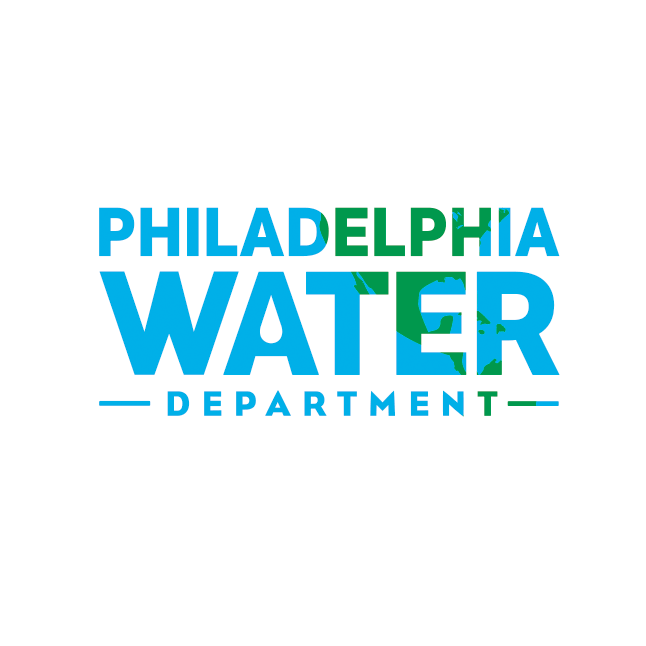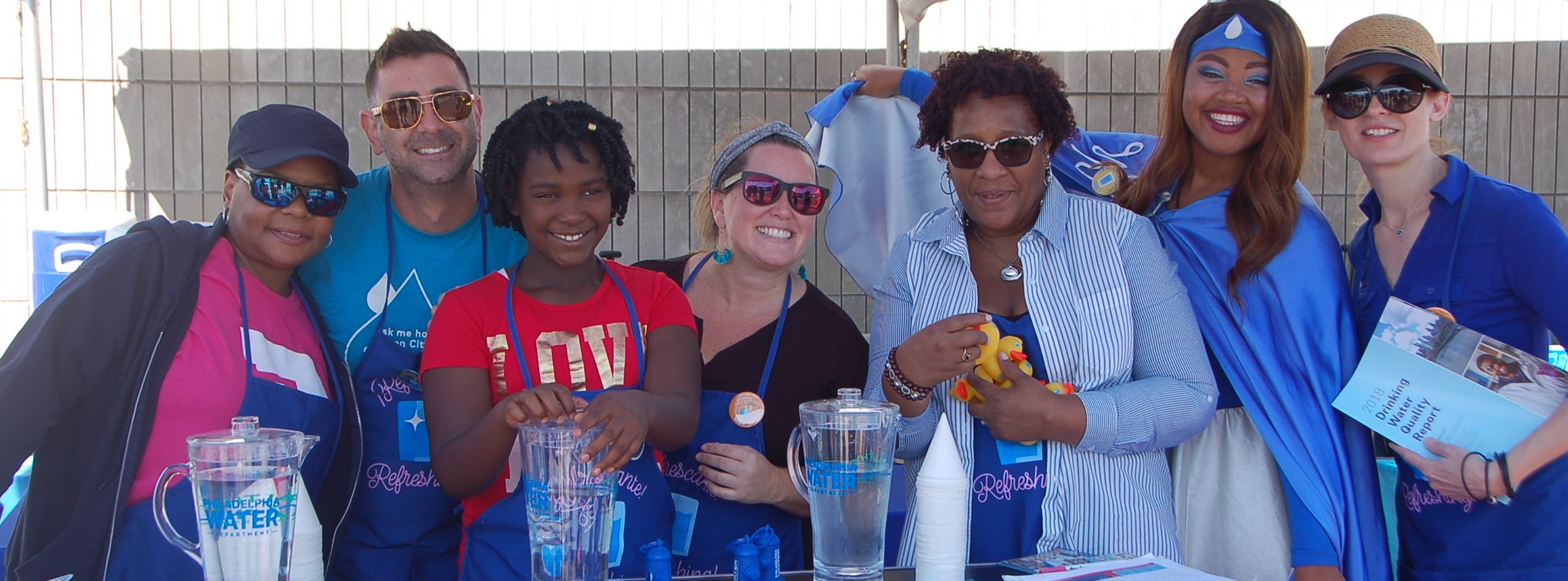From the very beginning, when we were known as the Watering Committee in the early 1800s, we were dedicated to protecting the environment and our waterways.

Much has changed since then—and since the first Earth Day 50 years ago. But at our heart, we are still an organization built around protecting a natural resource right up there with the air we breathe: clean water.
And, in the city that turned Earth Day into Earth Week right from the start, having that core mission means we infuse care for the planet into everything we do.
Here's a look at five ways the Philadelphia Water Department works to further the ideals that embody Earth Day:
Philly Wooder: It's Super Sustainable.
Just by choosing to drink tap, you can help reduce both plastic waste and the sort of energy use and pollution that contributes to climate change.
Take advantage of the water on tap at your home and choose reusable bottles when on the go!
Learn about how we make top-quality tap water in Philadelphia and some great Drink Philly Tap info about the pros of choosing tap!
Speaking of Climate Change…
Cities and local governments are the leaders when it comes to the singular challenge facing our planet.
We’re proud to be part of the City of Philadelphia’s comprehensive plan, which aims to limit municipal carbon output with smart energy policies and reduce the severity of climate change. As key partners in planning for the City's future, Philadelphia Water Department's Climate Change Adaptation Program prepares us for climate change impacts. That's why representatives recently took part in an international conference in Copenhagen: to highlight our work and learn from other cities.
It speaks to the quality of the work and research being done at PWD that the world is looking at what we are doing—right here in Philadelphia—as we all search for the best path forward.
Big picture: we have two programs dedicated to addressing climate change.
One is focused on mitigation—that’s doing our part to lessen PWD’s contribution to climate change by saving energy and using renewable energy sources.
We’re also focused on adaptation, and PWD is already building resiliency through the Green City, Clean Waters plan, long-term water and wastewater plans, and the efficient operation and management of infrastructure systems.
Some current projects underway—despite the pandemic—include comprehensive assessments of climate risks at our treatment plants, drafting of new recommendations that will allow us to ensure we are planning and designing infrastructure for a climate-resilient future, and new citywide coordination that is focused on effective adaptation and increased resiliency.
Poop Power!
It takes lots of energy to pump water around the city and treat water. However, as we noted above, we are working to reduce the amount of energy we use to fight climate change.
Resource recovery—capturing and reusing the nutrients, energy and water collected at wastewater treatment plants—is a major component of our strategy to reduce fossil fuel dependency. Reusing biogas, a wastewater byproduct, for energy is a central focus of recovery efforts because this abundant resource can be used to replace the fossil fuels that cause climate change.
Annually, we use enough biogas collected from wastewater to offset 30,000 metric tons of carbon dioxide equivalent (mt CO2e) emissions—that’s equal to taking more than 6,400 passenger vehicles off the road for one year.
Water Quality Workhorses
It’s amazing to think about doing something good for the whole planet by harnessing the power of waste, but let’s not overlook the immense good that our three Water Pollution Control Plants do locally. It is no small feat that the Delaware River was recently named River of the Year by the American Rivers organization.
How did we get here?
In 1972, two years after the first Earth Day, the United States enacted the Clean Water Act. This legislation helped turn the tide against pollution flowing into our waterways and also helped invest in treatment plant improvements in the late 1970s and 1980s.
Expanded capacity at wastewater treatment plants, like the three Water Pollution Control Plants that serve Philadelphia, had a dramatic impact on water quality. Our plants collect the sewage and other waste from Philadelphia’s buildings and streets and collectively keep about 415 million gallons of polluted water out of our rivers each and every day.
That adds up to over 150 billion gallons per year, on average. Numbers that big are not easy to wrap one's head around.
But, because our customers help to keep that volume of pollution out of local waterways every day, rivers like the Delaware and Schuylkill have since rebounded: today you will find striped bass, shad, river otters, and other species that kids growing up in the decade before the Clean Water Act—the people who gathered by the thousands at Indepence Hall and Belmont Plateau for Earth Day 1970—could only have dreamed of seeing in Philly.
Facing the Final Frontier with a Green Philly
Improvements to wastewater treatment since the first Earth Day and enactment of the Clean Water Act helped to address the pollution we often think of—waste dumping directly into our rivers.
There is still room for improvement in wastewater. But today, one of our biggest challenges is dealing with “nonpoint” pollution: runoff and sewer overflows from our combined sewer system, so named because it carries combined waste from our buildings and the polluted runoff from streets, parking lots and any other surface that doesn’t absorb and filter rain.
We’ll let the star of our favorite TV show, Welcome Back, Otter, explain:
Philadelphia is a model for cities everywhere because of our bold Green City, Clean Waters plan: an earth-friendly infrastructure approach that is helping to protect our waterways and improving the natural environment in city neighborhoods. The 25-year initiative benefits everything from the heat island to pollinators. And, like the Earth Day movement, it is something that must span decades to succeed.
A nationally recognized program, Green City Clean Waters celebrates the 9th anniversary of its launch in June. A $4.5 billion investment in cleaner waterways and greener neighborhoods, Green City, Clean Waters is designed to reduce sewer overflows by 8 billion gallons per year by 2036.
Between 2011 and 2016, our first five-year checkpoint, we created enough green tools and sewer improvements to reduce annual overflows by 1.71 billion gallons.
We haven’t stopped building green infrastructure systems since then and are hoping to exceed our 2021 goal: an annual reduction of more than 2 billion gallons.
In addition to the water quality benefits, communities all over Philadelphia now feature new green systems with trees and flowers that make our neighborhoods healthier, more vibrant places to live.
We could go on about the work we do to add to a more sustainable Philadelphia and a healthier planet, but we think you get the idea: we are here to make sure you have clean water and clean waterways, and that work ensures we are invested in the movement that led to the first Earth Day, and every one since.
Want to help?
Subscribe to our events email list and we’ll let you know when events like volunteer cleanups (residents helped us remove 85 tons of trash last year!) and the Rain Check workshops that have led to 6,000 Philly homes with rain barrels, are starting up again!
